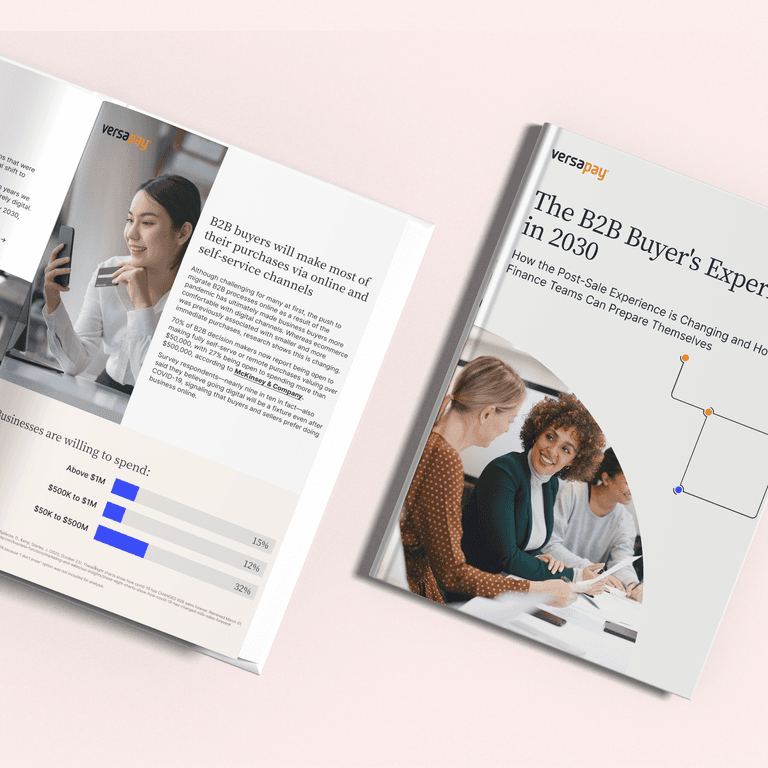The B2B Buyer's Experience in 2030
- 1 min read
The B2B post-sale experience is going digital. That means major changes to almost every area of AR, from the processes in place to the people who make it happen.
We've put together this guide to help you prepare for what's next and future-proof your AR department.

In this guide you'll learn:
- How collaboration will become more common
- What's going away (and what's replacing it)
- What AR departments will look like
- How AR will enhance the customer experience
—
In this guide, we take you through the top 10 predictions for what the B2B purchasing experience—everything from order to billing and collections to payments—will look like by the year 2030.
The need for digitization won't wait. Be ready with your free guide.
About the author

Nicole Bennett
Nicole Bennett is the Senior Content Marketing Specialist at Versapay. She is passionate about telling compelling stories that drive real-world value for businesses and is a staunch supporter of the Oxford comma. Before joining Versapay, Nicole held various marketing roles in SaaS, financial services, and higher ed.
